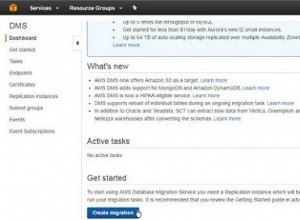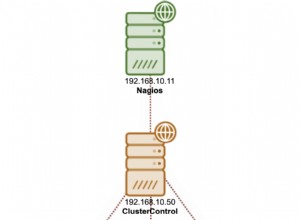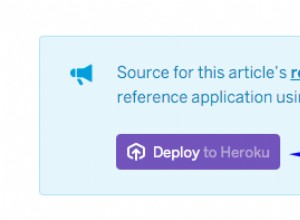Creo que es una buena idea, pero tienes que hacerlo tú mismo, no hay soporte integrado para ello. Si tiene una capa de acceso, puede hacerlo allí. Necesitarías una clase de atributo, algo como esto;
public enum IndexConstraints
{
Normal = 0x00000001, // Ascending, non-indexed
Descending = 0x00000010,
Unique = 0x00000100,
Sparse = 0x00001000, // allows nulls in the indexed fields
}
// Applied to a member
[AttributeUsage(AttributeTargets.Property | AttributeTargets.Field)]
public class EnsureIndexAttribute : EnsureIndexes
{
public EnsureIndex(IndexConstraints ic = IndexConstraints.Normal) : base(ic) { }
}
// Applied to a class
[AttributeUsage(AttributeTargets.Class)]
public class EnsureIndexesAttribute : Attribute
{
public bool Descending { get; private set; }
public bool Unique { get; private set; }
public bool Sparse { get; private set; }
public string[] Keys { get; private set; }
public EnsureIndexes(params string[] keys) : this(IndexConstraints.Normal, keys) {}
public EnsureIndexes(IndexConstraints ic, params string[] keys)
{
this.Descending = ((ic & IndexConstraints.Descending) != 0);
this.Unique = ((ic & IndexConstraints.Unique) != 0); ;
this.Sparse = ((ic & IndexConstraints.Sparse) != 0); ;
this.Keys = keys;
}
}//class EnsureIndexes
A continuación, podría aplicar atributos a nivel de clase o de miembro de la siguiente manera. Descubrí que agregar a nivel de miembro era menos probable que se desincronizara con el esquema en comparación con agregar a nivel de clase. Por supuesto, debe asegurarse de obtener el nombre del elemento real en lugar del nombre del miembro de C#;
[CollectionName("People")]
//[EnsureIndexes("k")]// doing it here would allow for multi-key configs
public class Person
{
[BsonElement("k")] // name mapping in the DB schema
[BsonIgnoreIfNull]
[EnsureIndex(IndexConstraints.Unique|IndexConstraints.Sparse)] // name is implicit here
public string userId{ get; protected set; }
// other properties go here
}
y luego en su implementación de acceso a la base de datos (o repositorio), necesita algo como esto;
private void AssureIndexesNotInlinable()
{
// We can only index a collection if there's at least one element, otherwise it does nothing
if (this.collection.Count() > 0)
{
// Check for EnsureIndex Attribute
var theClass = typeof(T);
// Walk the members of the class to see if there are any directly attached index directives
foreach (var m in theClass.GetProperties(BindingFlags.Public | BindingFlags.NonPublic | BindingFlags.Instance | BindingFlags.FlattenHierarchy))
{
List<string> elementNameOverride = new List<string>(1);
EnsureIndexes indexAttr = null;
// For each members attribs
foreach (Attribute attr in m.GetCustomAttributes())
{
if (attr.GetType() == typeof(EnsureIndex))
indexAttr = (EnsureIndex)attr;
if (attr.GetType() == typeof(RepoElementAttribute))
elementNameOverride.Add(((RepoElementAttribute)attr).ElementName);
if ((indexAttr != null) && (elementNameOverride.Count != 0))
break;
}
// Index
if (indexAttr != null)
{
if (elementNameOverride.Count() > 0)
EnsureIndexesAsDeclared(indexAttr, elementNameOverride);
else
EnsureIndexesAsDeclared(indexAttr);
}
}
// Walk the atributes on the class itself. WARNING: We don't validate the member names here, we just create the indexes
// so if you create a unique index and don't have a field to match you'll get an exception as you try to add the second
// item with a null value on that key
foreach (Attribute attr in theClass.GetCustomAttributes(true))
{
if (attr.GetType() == typeof(EnsureIndexes))
EnsureIndexesAsDeclared((EnsureIndexes)attr);
}//foreach
}//if this.collection.count
}//AssureIndexesNotInlinable()
Asegúrese de que los índices se vean así;
private void EnsureIndexesAsDeclared(EnsureIndexes attr, List<string> indexFields = null)
{
var eia = attr as EnsureIndexes;
if (indexFields == null)
indexFields = eia.Keys.ToList();
// use driver specific methods to actually create this index on the collection
var db = GetRepositoryManager(); // if you have a repository or some other method of your own
db.EnsureIndexes(indexFields, attr.Descending, attr.Unique, attr.Sparse);
}//EnsureIndexes()
Tenga en cuenta que colocará esto después de todas y cada una de las actualizaciones porque si olvida en algún lugar, es posible que no se creen sus índices. Por lo tanto, es importante asegurarse de optimizar la llamada para que regrese rápidamente si no hay que hacer una indexación antes de pasar por todo ese código de reflexión. Idealmente, haría esto solo una vez, o al menos, una vez por inicio de la aplicación. Entonces, una forma sería usar un indicador estático para rastrear si ya lo ha hecho, y necesitaría protección de bloqueo adicional al respecto, pero de manera demasiado simple, se parece a esto:
void AssureIndexes()
{
if (_requiresIndexing)
AssureIndexesInit();
}
Así que eso es el método que querrá en todas y cada una de las actualizaciones de la base de datos que realice, que, si tiene suerte, también se incluirá en el optimizador JIT.




